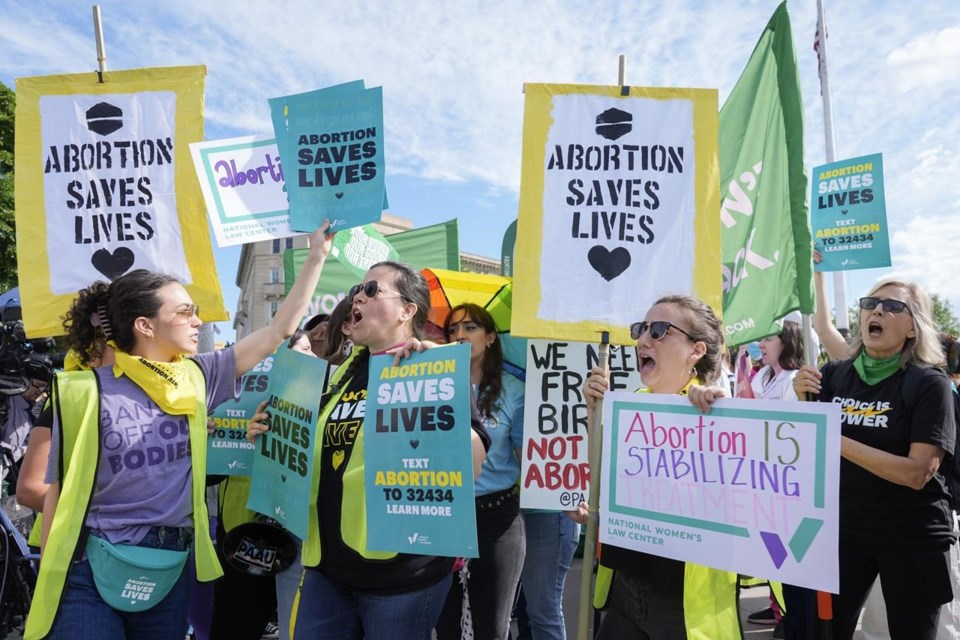WASHINGTON (AP) — Conservative Supreme Court justices appeared skeptical Wednesday that state abortion bans enacted after the overturning of violate federal health care law, though some also questioned the effects on emergency care for pregnant patients.
The case marks the first time the Supreme Court has considered the implications of a state ban since overturning the nationwide right to abortion. It comes from Idaho, which is among 14 states that at all stages of pregnancy .
The high court has already allowed the state ban to go into effect, even in medical emergencies, and it was unclear whether members of the conservative majority were swayed by the Biden administration's argument that federal law overrides the state in rare emergency cases where a pregnant patient's health is at serious risk.
The closely watched case tests how open the court is to carving out limited exceptions to state abortion bans. Their ruling, expected by late June, will also affect a similar case in Texas and could have wide implications in complaints that pregnant women have been turned away from emergency rooms care since Roe was overturned.
The abortion care must be allowed in those cases under a law that requires hospitals accepting Medicare to provide emergency care regardless of patients' ability to pay.
Justice Samuel Alito, who wrote the decision overturning Roe v. Wade, was doubtful. “How can you impose restrictions on what Idaho can criminalize, simply because hospitals in Idaho have chosen to participate in Medicare?” Alito said.
Idaho contends its ban does have exceptions for life-saving abortions, and the administration wants to wrongly expand the times when it's allowed to ."
But liberal justices detailed cases of pregnant women hemorrhaging or having to undergo hysterectomies after abortion care was denied or delayed in states with bans.
“Within these rare cases, there’s a significant number where the woman’s life is not in peril, but she’s going to lose her reproductive organs. She’s going to lose the ability to have children in the future unless an abortion takes place,” said Justice Elena Kagan.
Conservative Justice Amy Coney Barrett, meanwhile, said she was “kind of shocked” that an attorney for Idaho appeared to hedge when asked whether the state would allow abortions in cases like those. Attorney Joshua N. Turner responded that doctors can use their “good faith” medical judgment under Idaho's life-saving exception, but Barrett continued to press: “What if the prosecutor thinks differently?”
Turner acknowledged that a doctor could face a criminal case in that situation. Performing an abortion outside of limited exceptions in Idaho is a felony punishable by up to five years in prison.
Most Republican-controlled states have started enforcing new bans or restrictions since Roe was overturned, and Turner said those laws all have narrower exceptions than the federal law.
“This isn’t going to end with Idaho. This question is going to come up in state after state," he said.
Doctors have said Idaho’s abortion ban has already affected emergency care. More women whose conditions are typically treated with abortions must now be flown out of state for care, since doctors must wait until they are close to death to provide terminations within the bounds of state law.
Abortion opponents say doctors have mishandled maternal emergency cases, and argue the Biden administration overstates health care woes to undermine state abortion laws.
The justices also heard another abortion case this term seeking to restrict access to . It remains pending, though the justices overall seemed skeptical of the push.
The Justice Department originally brought the case against Idaho, arguing the state’s abortion law conflicts with the 1986 Emergency Medical Treatment and Active Labor Act, . It requires hospitals that accept Medicare to provide emergency care to any patient regardless of their ability to pay. Nearly all hospitals accept Medicare.
A federal judge initially sided with the administration and ruled that abortions were legal in medical emergencies. After the state appealed, the Supreme Court allowed the law to go fully into effect in January.
The audience was sparse inside the court, with several benches empty or sparingly used. But outside, dueling protesters gathered with signs such as “Abortion saves lives,” from one side of the crowd and “Emergency rooms are not abortion clinics” from abortion opponents.
___ Associated Press writers Gary Fields and Mark Sherman contributed to this report.
Lindsay Whitehurst, The Associated Press



